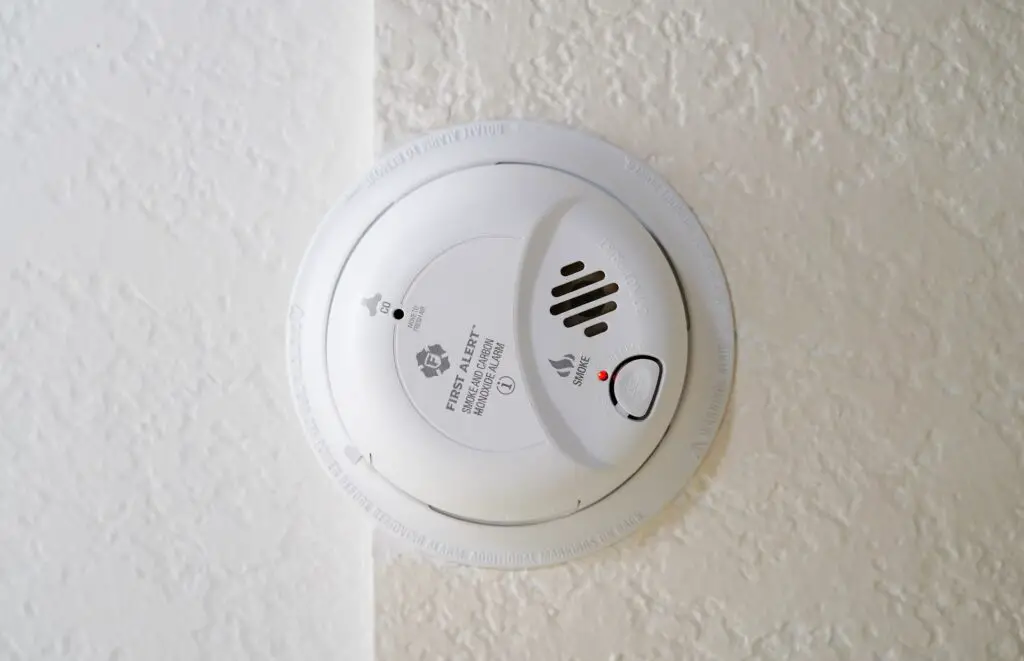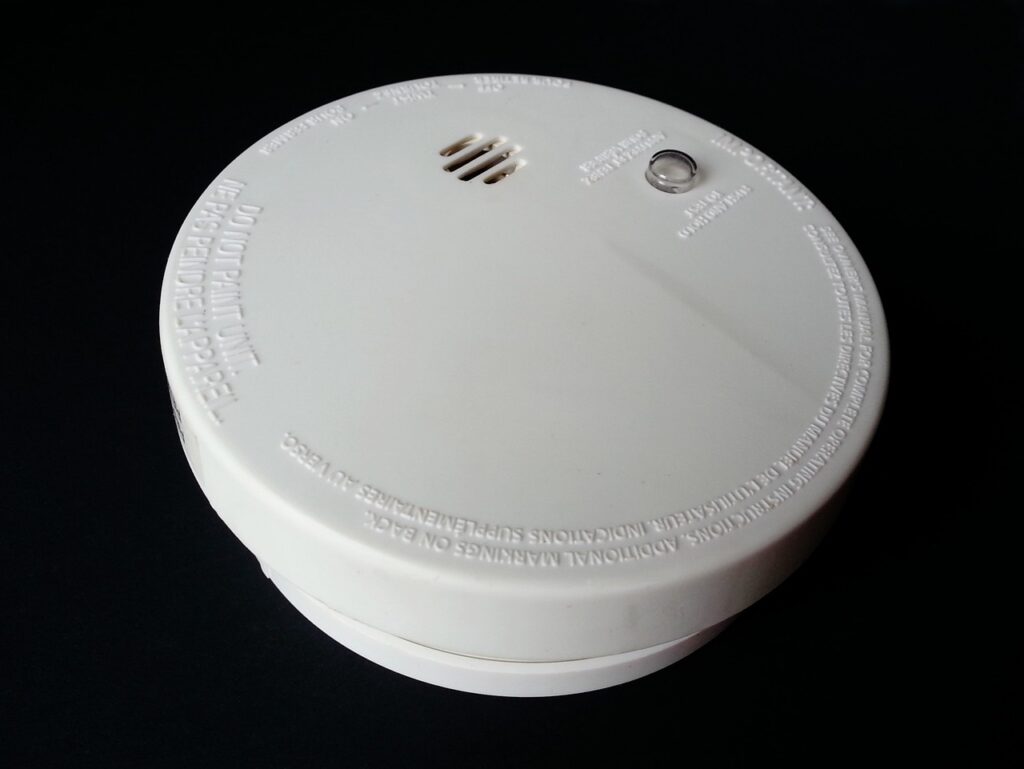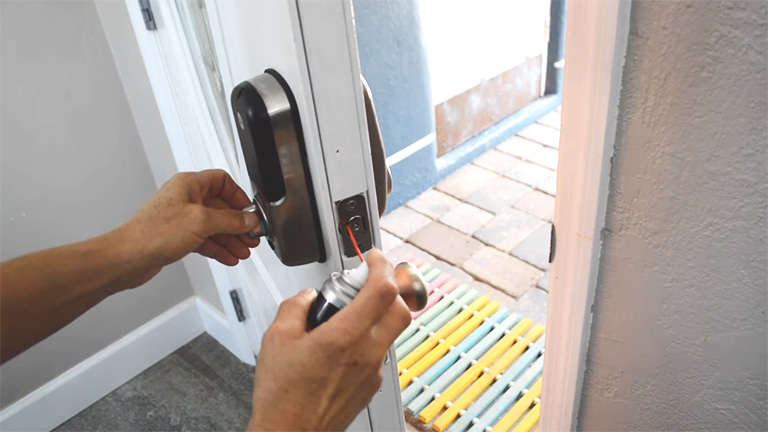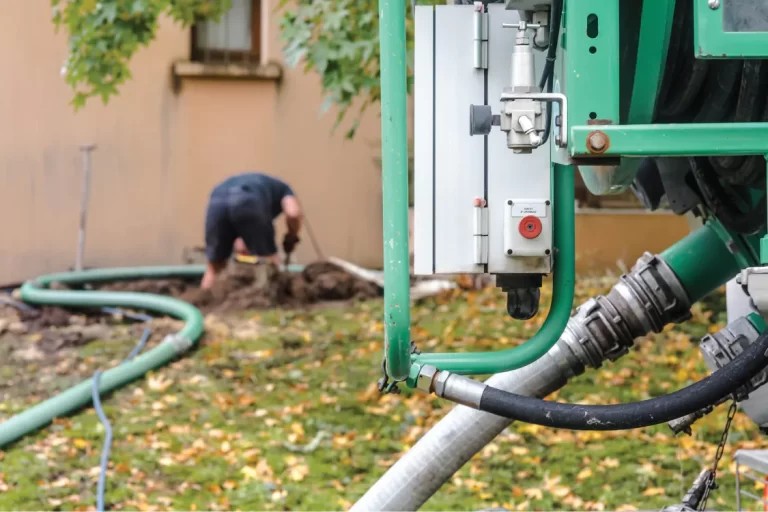How to Change Battery in Smoke Detector

Changing the battery in a smoke detector is a simple task that can save lives. Smoke detectors are an essential safety feature in any home, and regular maintenance is crucial to ensure they function correctly. The battery in a smoke detector should be changed at least once a year, or when the detector starts to chirp, indicating a low battery.
To change the battery in a smoke detector, the first step is to locate the detector. Smoke detectors are typically mounted on the ceiling or high on a wall. Once the detector is located, the next step is to remove the cover. This can usually be done by twisting the detector counterclockwise or pressing a release button. Once the cover is removed, the battery should be visible, and it can be removed by pressing down on the battery and sliding it out of the compartment. It is essential to note the type of battery required for the detector and replace it with the same type. Finally, replace the cover and test the detector to ensure it is functioning correctly.
Identifying the Type of Smoke Detector
Before changing the battery of a smoke detector, it is important to identify the type of detector that you have. There are two main types of smoke detectors: battery-operated and hardwired with battery backup.
Battery-Operated
Battery-operated smoke detectors are the most common type of smoke detectors. These detectors are powered by batteries and do not require any wiring. They are easy to install and can be placed anywhere in the house.
To identify a battery-operated smoke detector, look for a compartment on the back or side of the detector that can be opened to access the battery. The compartment may be secured with a screw or a latch.
Hardwired with Battery Backup
Hardwired smoke detectors are connected to the electrical wiring of the house and have a battery backup in case of a power outage. These detectors are more reliable than battery-operated detectors but require professional installation.
To identify a hardwired smoke detector, look for wires coming out of the back or side of the detector. The wires may be connected to a junction box or directly to the electrical wiring of the house. The battery backup compartment may be located on the back or side of the detector and can be opened to access the battery.
It is important to note that some smoke detectors may have both battery and hardwired power sources. In this case, the detector will have both wires and a battery compartment.
By identifying the type of smoke detector that you have, you can ensure that you are replacing the battery correctly and safely.
Preparation for Battery Replacement
Safety Precautions
Before replacing the battery in a smoke detector, it is important to take some safety precautions. First, make sure the area around the smoke detector is clear of any obstructions. This will ensure that you have enough space to work and will prevent any accidents from occurring.
Next, turn off the power to the smoke detector. This can be done by flipping the circuit breaker that controls the smoke detector. It is important to turn off the power to the smoke detector to prevent any electrical shocks or damage to the device.
Finally, wear gloves and a mask when handling the smoke detector and battery. This will protect you from any dust or debris that may be present in the device.
Tools and Materials Needed
To replace the battery in a smoke detector, you will need a few tools and materials. These include:
- New battery: Make sure to purchase the correct type of battery for your smoke detector. The most common types of batteries used in smoke detectors are 9-volt and AA.
- Step ladder: This will help you reach the smoke detector if it is located on the ceiling or high up on a wall.
- Screwdriver: You will need a screwdriver to remove the cover of the smoke detector.
- Cleaning cloth: Use a cleaning cloth to wipe down the smoke detector and remove any dust or debris.
By taking these safety precautions and having the necessary tools and materials, you will be prepared to replace the battery in your smoke detector.
Replacing the Battery
Smoke detectors are an essential safety feature in every home, and it is crucial to ensure that they are working correctly. One way to do this is to regularly replace the batteries in your smoke detector. Here are the steps to follow to replace the battery in your smoke detector.
Removing the Smoke Detector
First, you need to remove the smoke detector from its mounting bracket. Depending on the model of your smoke detector, you may need to twist it counterclockwise or pull it straight down to remove it. Be careful not to damage the wires or the mounting bracket.
Accessing the Battery Compartment
Once the smoke detector is removed, you can access the battery compartment. Some models have a hinged cover, while others require you to twist or slide the cover to open it. If you are unsure how to open the battery compartment, consult the user manual.
Installing the New Battery
Once you have accessed the battery compartment, remove the old battery and replace it with a new one. Make sure that you insert the new battery correctly, following the polarity markings on the battery and the smoke detector.
Testing the Detector
After installing the new battery, it is essential to test the smoke detector to ensure that it is working correctly. Press the test button on the smoke detector and wait for the alarm to sound. If the alarm does not sound, check the battery installation and try again. If the smoke detector still does not work, it may need to be replaced.
By following these simple steps, you can ensure that your smoke detector is working correctly and providing the necessary protection for you and your family. Remember to replace the batteries in your smoke detector regularly to keep it functioning correctly.

Maintenance and Troubleshooting
Regular Maintenance Tips
To ensure your smoke detector is always functioning properly, there are a few regular maintenance tips to keep in mind. First and foremost, it’s important to test your smoke detector regularly, ideally once a month. This can be done by pressing and holding the test button until the alarm sounds. If the alarm does not sound, the battery may need to be replaced.
In addition to testing, it’s important to keep your smoke detector clean and free of dust and debris. This can be done by gently vacuuming the exterior of the detector with a soft brush attachment. It’s also a good idea to replace the batteries in your smoke detector at least once a year, even if the low battery indicator has not yet been activated.
Troubleshooting Common Issues
If your smoke detector is not functioning properly, there are a few common issues that may be causing the problem. One of the most common issues is a dead battery. If the low battery indicator is activated or the alarm does not sound when tested, the battery should be replaced immediately.
Another common issue is a dirty or dusty detector. If the detector is not cleaned regularly, dust and debris can accumulate inside and interfere with its function. If cleaning the detector does not solve the problem, it may need to be replaced.
Finally, if the smoke detector is still not functioning properly, it’s possible that there is a problem with the wiring or circuitry. In this case, it’s best to contact a professional electrician to diagnose and resolve the issue.
Frequently Asked Questions (FAQs)
Q: What steps are involved in replacing the battery in a hardwired smoke detector?
A: To replace the battery in a hardwired smoke detector, you should first turn off the power supply to the device. Then, remove the cover of the smoke detector and locate the battery compartment. Remove the old battery and replace it with a new one of the same type. Finally, replace the cover and turn the power back on.
Q: How can I safely open the cover of my smoke alarm to replace the battery?
A: To open the cover of a smoke alarm, you should first make sure the power to the device is turned off. Then, locate the locking mechanism on the cover and release it. Gently pull the cover off to access the battery compartment.
Q: What type of battery is required for a typical smoke detector?
A: Most smoke detectors require a 9-volt alkaline battery. However, it is important to check the manufacturer’s instructions for the specific type of battery required for your smoke detector.
Q: Why does my smoke detector continue to beep after I’ve changed the battery?
A: If your smoke detector continues to beep after you’ve changed the battery, it may be due to a buildup of dust or other debris in the device. Try cleaning the smoke detector with a soft brush or vacuum cleaner. If the problem persists, it may be a sign that the device needs to be replaced.
Q: How can I change the battery in my smoke detector without triggering the alarm?
A: To change the battery in a smoke detector without triggering the alarm, you should first turn off the power to the device. Then, remove the cover of the smoke detector and replace the battery. Finally, replace the cover and turn the power back on.
Q: Is it possible to stop the beeping of a smoke detector by simply removing the battery?
A: No, removing the battery from a smoke detector will not stop the beeping. In fact, it is dangerous to remove the battery from a smoke detector as it may prevent the device from functioning properly in the event of a fire. If your smoke detector is beeping, it is important to address the issue by replacing the battery or the device itself.
Final Thoughts
Changing the battery in your smoke detector is a crucial step in maintaining a safe and secure home environment. Whether you’re dealing with hard-wired smoke detectors or battery-operated units, understanding the process is vital. Remember to carefully remove the smoke detector cover and identify the positive and negative terminals before replacing the old battery with new lithium batteries or other recommended smoke alarm batteries.
This simple yet essential task ensures that your smoke alarms remain in functioning order, providing peace of mind and protection for you and your loved ones. Regularly checking and replacing smoke detector batteries or smoke alarm batteries helps prevent false alarms and ensures your devices are ready to alert you in case of an emergency. Always refer back to the manufacturer’s instructions for specific details about your model, whether it involves hard-wired smoke detectors or battery-operated ones, to keep your smoke detector functioning optimally.






